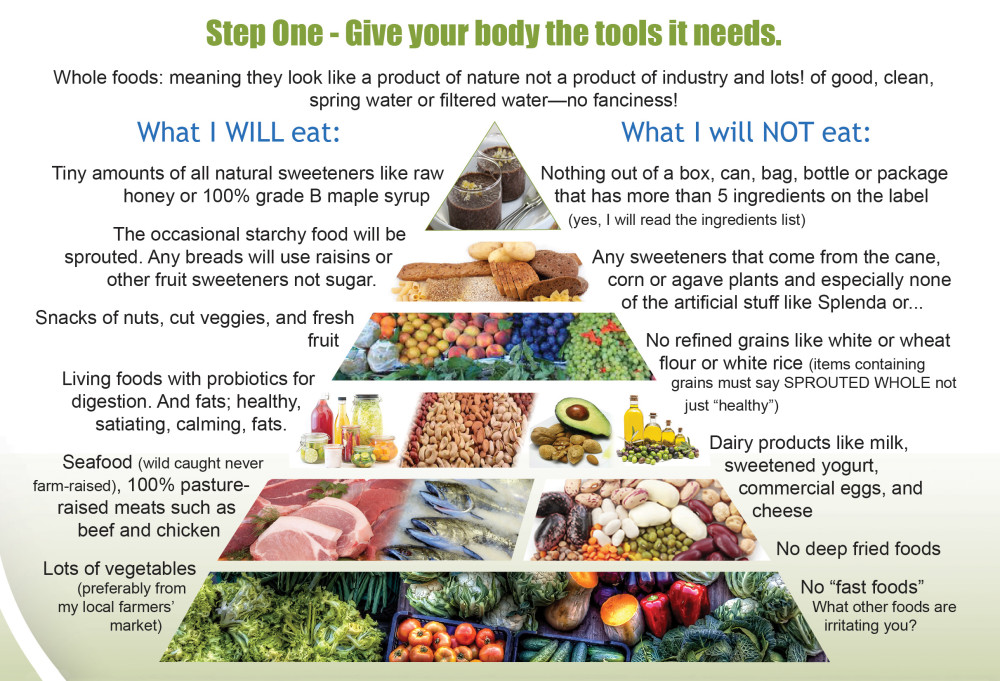Something rare came across my desk today, a readable yet scientifically accurate weight loss truth, finally! The truth about exercise and weight loss—or at least a place to start.
Weight loss myths I’ve known:
 In 2007 the American Heart Association and the American College of Sports Medicine recommended 30 minutes of moderately strenuous exercise five days a week “to maintain and promote health.” But there was very little data supporting the idea that those who exercise more gain less weight.
In 2007 the American Heart Association and the American College of Sports Medicine recommended 30 minutes of moderately strenuous exercise five days a week “to maintain and promote health.” But there was very little data supporting the idea that those who exercise more gain less weight.
The USDA urges us to get 90 minutes of moderately vigorous exercise almost every day “to maintain weight”. There’s no science behind this recommendation either. More like since 60 minutes of exercise was scientifically proven NOT to result in weight loss, must need even more.
And this is my favorite: If only we weren’t so lazy, obesity wouldn’t be a problem which I consider is the message in Michelle Obama’s Let’s Move! program. Let’s Move has the lofty goal of using exercise to solve the childhood obesity epidemic this generation.
And it’s corollary: “I’m going for a run so I can have my ice-cream later.”
“[We] are drowned by an unhelpful message about maintaining a ‘healthy weight’ through calorie counting, and many still wrongly believe that obesity is entirely due to lack of exercise. This false perception is rooted in the Food Industry’s Public Relations machinery, which uses tactics chillingly similar to those of big tobacco. The tobacco industry successfully stalled government intervention for 50 years starting from when the first links between smoking and lung cancer were published. This sabotage was achieved using a ‘corporate playbook’ of denial, doubt and confusing the public.” –Brownell and Warner, 2009
History repeats: cigarettes and carbohydrates
But as with many government programs, Let’s Move! doesn’t address the real cause of obesity and instead pins the problem on the wrong target: lazy Americans.
Before you go back to the couch, please don’t get me wrong; exercise is an important part of health. It’s just that a lack of exercise doesn’t cause the obesity epidemic and a regular fitness program won’t suddenly solve it. If you are one of my many clients who come to me to lose weight saying you exercise regularly, please continue to exercise. Let’s handle the real cause and get you losing that excess fat for real.
We’ve already seen how the powerful industry interests and their hired lobbyists and public relations firms can create gridlock when it comes to creating a healthy and fit you:
In 1954 the tobacco industry paid to publish the “Frank Statement to Cigarette Smokers” in hundreds of U.S. newspapers. It stated that the public’s health was the industry’s concern above all others and promised a variety of good-faith changes. What followed were decades of deceit and actions that cost millions of lives. –Brownell and Warner, 2009
After reviewing more than 7000 reports, many commissioned by the tobacco industry, on a Saturday in 1964 (chosen so as to not affect the stock market), we received the truth. The Smoking and Health: Report of the Advisory Committee to the Surgeon General held cigarette smoking responsible for a 70 percent increase in the mortality rate of smokers over non-smokers, estimated that average smokers had a nine- to ten-fold risk of developing lung cancer compared to non-smokers: heavy smokers had at least a twenty-fold risk. The risk rose with the duration of smoking and diminished with the cessation of smoking. The report went on to discuss smoking during pregnancy, youth smoking, smoking’s relation to heart disease, emphysema, bronchitis, and more… all backed by science.
But industry prevailed for yet a few more years. Despite the irrefutable knowledge and the committee’s insistence on immediate remedial action, politicians took until 1965 to require that all cigarette packages carry a health warning (and only until 1970 was this warning made in the name of the Surgeon General). Effective September 1970, cigarette advertising on television and radio was banned.
Today we face taking on the food industry and its quest to foist ever more junk food products on unsuspecting Americans, especially children. We face changing subsidies to commercial “cash crops” that have always been associated with a bigger waistline. We face changing the commercial meat industry that is paid by weight not nutrient content so fattens its animals quickly using the same cereal grains (wheat, corn, oats…) and legume (soy etc.) “cash crops” that fatten us. An industry that speeds up animal growth even more with hormones, antibiotics, and even arsenic—whether the animals need it or not. We then eat these fattening and still quite active hormones, antibiotics and other intentional additives—and then give up meat altogether “for health reasons” despite the evidence that a vegan or vegetarian diet must be extremely carefully balanced and is most definitely not healthy to the extent it relies on the same cereal grain and legume “cash crops.”
Our government boasts of the highest food production in the world for the cheapest (subsidized) cost and we balk at paying more for the (unsubsidized) free range and grass fed version.
In 1970, the U.S. food system churned out 2,168 calories per day per person, of which 402 came from added sugar and 410 from added fat. Combined, that’s 812 calories from additives, or about 37 percent of the total.
Jump forward to 2008 when the food system cranked out 2,673 calories per person. That’s an impressive 23 percent jump from the 1970 number—and extremely economically impressive and valuable in light of the fact that our population also increased: more of us eating more food. The cheap-food policy instituted by Nixon-era USDA chief Earl Butz succeeded dramatically. In an age of maximum production of corn and soy, the U.S. food system became a calorie-generating juggernaut.
Why do we eat such crap food? The USDA throws up its hands and says: “Despite the benefits to overall diet quality, it can be difficult to convince consumers to change food preferences.”
Powerless.
 According to Yale’s Rudd Center, the US fast-food chains like McDonalds, Wendy’s, and Burger King spent $4.6 billion on advertising in 2012. “For context,” Rudd reports, “the biggest advertiser, McDonald’s, spent 2.7 times as much to advertise its products ($972 million) as all fruit, vegetable, bottled water, and milk advertisers combined ($367 million).” I can’t find numbers for the marketing budgets for the gigantic food companies that stock the middle eye-level shelves of supermarkets; but according to Advertising Age, Kraft alone spent $683 million on US advertising in 2012.
According to Yale’s Rudd Center, the US fast-food chains like McDonalds, Wendy’s, and Burger King spent $4.6 billion on advertising in 2012. “For context,” Rudd reports, “the biggest advertiser, McDonald’s, spent 2.7 times as much to advertise its products ($972 million) as all fruit, vegetable, bottled water, and milk advertisers combined ($367 million).” I can’t find numbers for the marketing budgets for the gigantic food companies that stock the middle eye-level shelves of supermarkets; but according to Advertising Age, Kraft alone spent $683 million on US advertising in 2012.
By contrast, Center for Nutrition Policy and Promotion, the USDA’s sub-agency that “works to improve the health and well-being of Americans by developing and promoting dietary guidance that links scientific research to the nutrition needs of consumers,” had a proposed budget of $8.7 million in 2013.
So we’ll have to make our own decisions.
Coca Cola still pushes a $3.3 billion ad campaign suggesting that sugary drinks are fine as long as you exercise. They’re not. Coca Cola positions its campaigns with images of healthy people, with being athletic, even promoting its sugary drinks as a sports fuel.
Busting the myth of physical inactivity
Finally, the weight loss science is being analyzed properly and reorganized—and made readable! A group of British, South African, and American researchers just published a report that places the blame for the obesity epidemic squarely on the junk food industry. “You cannot exercise away the effects of a bad diet.”
Despite various government food pyramids and low-fat programs, obesity rates have skyrocketed in the past 30 years. During that time there has been little change in activity levels. The root of the problem is the type and amount of food we eat.
In the meantime, the food industry continues to try to change the subject from diet to exercise—or at least go low calorie and still buy prepared low-fat foods while you move more. But losing fat by exercising has never been proven and, in fact, exercise makes some of us gain weight.
And it’s not just making us fat; poor diet now generates more disease than physical inactivity and smoking combined.
“At the end of our clinic day, we go home thinking, “The clinical improvements are so large and obvious, why don’t other doctors understand?” Carbohydrate restriction is easily grasped by patients: Because carbohydrates in the diet raise the blood glucose, and as diabetes is defined by high blood glucose, it makes sense to lower the carbohydrate in the diet. By reducing the carbohydrate in the diet, we have been able to taper patients off as much as 150 units of insulin per day in 8 d, with marked improvement in glycemic control and even normalization of glycemic parameters.” –Eric Westman, MD, MHS 2008
The body handles protein, fat, and carbohydrates very differently.We burn carbohydrates and fats for energy—with certain fats also being vital building blocks for certain hormones, brain chemicals, immune chemicals, cell membranes, skin and more.
We can use proteins for energy if needed, but normally the body uses amino acids released from proteins as vital building blocks for new proteins and various hormones, brain chemicals, immune chemicals and more.
For every 150 calories of sugar, there was an 11-fold increase in the prevalence of type 2 diabetes, in comparison to an identical 150 calories obtained from fat or protein. The average American gets approximately 350 calories each day from added sugars. Even the conservative, food-industry-backing American Heart Association recommends less than 150 calories in added sugars while specifying that naturally occurring sugars, such as those found in milk and fruit don’t qualify as added sugars.
Carbohydrate restriction is the single most effective intervention for reducing all the features of the metabolic syndrome and should be the first approach in diabetes management.
When it comes to losing weight—it is all about carbohydrate handling. And it’s tricky.
 Carbohydrates do more than just elevate blood sugar. While elevated blood sugar will imbalance your insulin levels, cause metabolic syndrome and pack on fat, by another mechanism carbohydrates also prevent you from burning the extra fat you may have.
Carbohydrates do more than just elevate blood sugar. While elevated blood sugar will imbalance your insulin levels, cause metabolic syndrome and pack on fat, by another mechanism carbohydrates also prevent you from burning the extra fat you may have.
Our bodies are designed to burn carbohydrates first. We store rather than burn fat when meals contain both. In other words, if we eat carbohydrates and fats, we won’t use the fats as a source of energy—instead, the saturated fats and mono-unsaturated fats that can act as fuels but aren’t vital building blocks are sent to fat cells and stored for some future famine.
The “fat creates fat” myth started here. It’s tricky isn’t it? Because it isn’t untrue. It is true that dietary fat is repackaged by the liver and sent to fat cells (adipose) where it is stored until needed as fuel. But it’s not really the bad guy.
The liver converts carbohydrate into fat to build up fat reserves when we eat very little fat.
Here’s the fine print: Whether or not the liver creates new fat reserves depends on the level of carbohydrate consumption not one time but as a pattern. It’s when there is plenty of carbohydrate fuel, fat is stored and stored and stored…
Even at a massive 500 g carbohydrate in one day, this unusually large carbohydrate load is mainly converted first to glucose, elevates blood sugar, and then to glycogen—to fill available space in our glycogen stores which in most people typically runs about two-thirds full. One meal or even a day doesn’t make us fat—and it does lead to the nearly exclusive metabolism into glucose for fuel until the glycogen stores return to two-thirds full—about 48 hours if you don’t continue to eat a lot of sugar or other carbs.
And that is where the performance “carb loading” myth started. Although we now know that most athletes taking this approach do not perform as well. Fat, including ketone bodies, appears to be the ideal fuel for most exercise—it is abundant, does not need replacement or supplementation during exercise, and can fuel the forms of exercise in which most athletes participate.
But that’s not all. Recent data is leading to growing concerns that carb-preferring athletes are developing insulin-resistance and may be at risk of developing type 2 diabetes if they continue to eat very high-carbohydrate diets.
What happens if you continue to eat a high carb diet?
The liver only converts substantial amounts of carbohydrate into fat when the body’s total glycogen stores are raised and maintained raised.
How to store fat? Deliberately eat large amounts of carbohydrates for 2-3 days (we’ve been eating high carb for how long?).
How to speed up fat storage? Eat a lot of carbs and a lot of fats. Your body has to burn the carbs first so has no choice but to package the fats up and send them off to fat cells.
How to lose weight?
If you already have excess body fat, the only way to release and burn that already-stored fat is to remove the carbohydrates that are preferentially used for fuel if they are available.
For most of us, this is going to be somewhere below 80 grams of carbohydrates every day.
In the absence of significant amounts of carbohydrates, your body will (finally) release the stored fats and use them for fuel.
And please don’t scrap your exercise routine…
Go further, talk to your health clubs and gyms asking them to set an example by removing sugary drinks and junk food from their premises. Talk to your coaches and your children’s coaches asking them to ban sugary treats during and after games.
Recently the UK’s Academy of Medical Royal Colleges reported that exercise is more powerful than many drugs. They found that 30 minutes of moderate exercise five times a week can reduce the risk of:
- breast cancer by as much as 25%
- bowel cancer by as much as 45%
- dementia by as much as 30%
- stroke by 30%
- heart disease by over 40%
A brisk walk that makes you slightly sweaty and slightly out of breath is all it takes. Dancing, cycling, and even sex can bring dramatic health benefits. In fact a varied and enjoyable exercise program works better than the same daily routine.
Bottom line? Continue to get your exercise for a ton of health benefits. But for weight loss, eat a healthy, whole food, low carbohydrate diet.
References
Acheson KJ, Schutz Y, et al., “Glycogen storage capacity and de novo lipogenesis during massive carbohydrate overfeeding in man.” Am J Clin Nutr 1988;48:240-7.
Brownell KD, Warner KE. “The perils of ignoring history: big tobacco played dirty and millions died. How similar is big food?” Milbank Q 2009;87:259–94. doi:10.1111/j.1468-0009.2009.00555.x
“Exercise—the miracle cure.” Report from the Academy of Medical Royal Colleges. Feb 2015.
Flatt JP. “Use and storage of carbohydrate and fat” Am J Clin Nut 1995;61(suppl):952S-95.
Malhotra A, Noakes T, and Phinney S, “It is time to bust the myth of physical inactivity and obesity: you cannot outrun a bad diet.” Br J Sports Med. 2015 Apr 22. pii: bjsports-2015-094911. doi: 10.1136/bjsports-2015-094911. [Epub ahead of print]
I Holme, SA Anderssen, “Increases in physical activity is as important as smoking cessation for reduction in total mortality in elderly men: 12 years of follow-up of the Oslo II study.”Br J Sports Med 2015;49:743-748 doi:10.1136/bjsports-2014-094522






